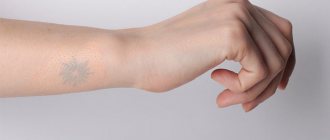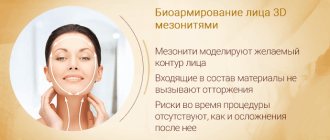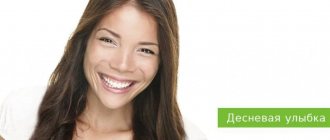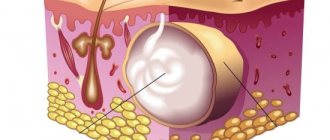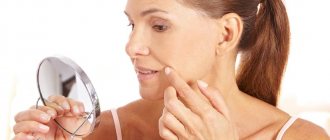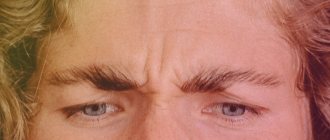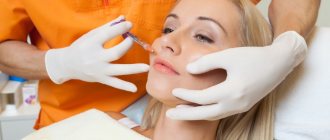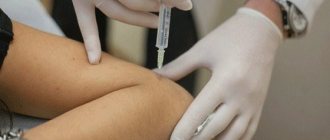Facial anatomy
The face, like many other tissues, undergoes sagging processes under the influence of gravity. This process is called gravitational ptosis. I propose to consider the anatomy of the face layer by layer. It is a layer-by-layer description of facial anatomy from the perspective of the concept of Australian surgeon Brian Mendelson that will help to understand the mechanisms of aging.
Essentially, the face consists of 5 layers: skin, fatty tissue, muscles, ligaments, periosteum and facial skeleton.
- The skin is the outermost layer. Traditionally, facial aging is associated with skin changes, so most treatments begin with skin care. Many people use creams, masks, etc. It really has a positive effect. However, up to a certain age. According to various authors, facial aging begins at the molecular level on average at the age of 30. This process occurs deep in the structures of the skin, so all rejuvenation procedures are essentially care and do not have a long-lasting effect.
- Subcutaneous tissue. Lies under the skin and consists of adipose tissue. The thickness of the fat layer varies in different parts of the face. With age, fat sinks and accumulates in certain places, forming bags under the eyes, jowls, etc.
- Muscles . There are 21 facial muscles on the face. With age, muscles weaken and sag, like a hammock in which fat accumulates. In this regard, working exclusively with the skin will not help achieve aesthetic rejuvenation. After all, even after performing a skin tightening, an array of muscles and adipose tissue will stretch the face and the result of skin procedures will disappear in no more than 1 year.
- Ligaments . With the help of ligaments, the soft tissues of the face are attached to the facial skeleton and are located in certain places. Time and gravity have virtually no effect on the ligaments, so weakened muscles and hanging fat are thrown over the ligaments, forming pronounced age-related contours of the face.
- Periosteum and facial skeleton. The bony skeleton determines the shape of the face and the very uniqueness and individuality of our faces. However, over time, the bone tissue slowly collapses, which creates the preconditions for the heavy mass of the face to slide down.
Rice. 1. Layers of the face according to Mendelssohn
Rice. 2 Mendelssohn's ligaments
Rice. 3 Young and old face
Force of gravity
First there is a tired look. It seems that you just need to get some sleep to make your face look young and fit again. However, the features of the face continue to change - it seems to be sliding down, and it is enough to look at your photographs from five years ago to be convinced of this. What you definitely shouldn't do is get upset. Modern cosmetology knows everything about the mechanisms of formation of ptosis (gradual drooping of tissues) and successfully copes with the force of gravity.
Expert opinion
Marina Ratkevich, chief physician of the Petrovka Beauty clinic “During life, collagen fibers, which are responsible for maintaining all layers of the skin in their original position, lose their elasticity, stretch and deform.
This happens under the influence of two factors: internal (genetic predisposition, concomitant diseases) and external (lifestyle, stress, bad habits). These changes in the skin, subcutaneous fat and muscle-ligamentous apparatus lead to the fact that the face droops.” “It is worth understanding that the rate of development of ptosis is directly related to excess weight: the heavier the skin and subcutaneous fat, the more it will sag. Undoubtedly, it is possible to reduce ptosis with the help of cosmetic procedures; it is important not to neglect this problem and contact specialists in time,” adds independent expert in the field of dermatology Yulia Gallyamova.
Correction of age-related changes
With age, multifactorial processes occur that determine the aging process of the face. These processes affect the facial skeleton and integumentary tissues. After 30 years, the beginning changes in the face are already visually noticeable. Changes in all tissue layers lead to their displacement and downward movement. More pronounced processes occur in the middle third of the face. The decisive factor in the drooping of the integumentary tissues of the face is a change in the bone surface.
- Forehead
Flattening of the frontal bone, combined with constant tension of the frontal muscle, leads to drooping of the integumentary tissues of the upper area of the face and the formation of transverse grooves in the forehead. The sliding mass of soft tissues of the forehead forms excess tissue in the area of the upper eyelids, the tails of the eyebrows droop and a “heavy” look is formed.
- Middle face area
Atrophy of bone tissue and fat packets in the midface area, combined with weakening of the muscles, leads to contusion of the ligaments and grooves. Pronounced bags under the eyes and eye bags form.
- Neck
The framework that holds the tissues of the lower zone of the face is the platysma - the subcutaneous muscle of the neck. Atrophy of the jaw bone, prolapse of the submandibular salivary gland, together with weakening and divergence of the platysma fibers, form an obtuse cervical-mental angle and a “double chin.” Thus, with age we observe: a reduced lower jaw; a stretched space at the bottom of which fat has accumulated; atrophied neck muscles that can no longer hold soft tissue and sag under gravity; the resulting jowls.
Fig.1 Aging according to Mendelssohn
Rice. 2 Bone atrophy according to Mendelssohn
Rice. 3 Facial aging: pronounced folds, jowls, “fat packets”
What does cosmetology offer for facial rejuvenation?
Now that you have understood the basics of dental pathologies that affect the appearance of the lower third of the face, let's look at the main range of cosmetic procedures that are aimed at maintaining facial tissue and skin in tone and which have an externally rejuvenating effect.
Let us immediately make a reservation that most of these procedures do not have a permanent effect, and in order to always look young (not only in the soul, but also in appearance), these rejuvenation procedures must be repeated regularly.
So, modern rejuvenation methods guard your beauty
How to slow down facial aging?
Facial aging is a multifactorial process manifested in bone resorption, changes and sagging of the soft tissues of the face. Procedures for external influence on facial skin are essentially care products that do not bring the proper rejuvenating effect.
- Superficial treatments: creams, ointments, gels and other procedures moisturize and maintain skin condition.
- Injection techniques: fillers and botulinum toxin. Fillers based on hyaluronic acid help fill the volume of tissue that has undergone atrophy, and botulinum toxin relaxes the muscles that form wrinkles. The absolute advantage of these techniques is their reversibility of action. Typically, fillers and botulinum toxin preparations dissolve within 6 months.
- Surgical facial rejuvenation: the most effective method. There are different types of face lifting. It is necessary to approach the choice of face lifting method from the standpoint of existing facial changes, their severity, the patient’s wishes and the surgeon’s capabilities.
Fundamentally, the following types are distinguished: skin lifting; SMAS lifting; MACS-lifting; spacelifting.
- Skin lifting
In the mid-20th century, it was believed that it was skin changes that led to facial aging. However, the era of skin tightening showed its ineffectiveness due to the short-term results - the result lasted no more than 1 year. Modern cosmetology is again resorting to skin tightening using threads. Thread lifting gives short-term results and makes sense for initial facial changes. Pronounced age-related changes are not properly corrected with the help of threads, so their use must be strictly dosed.
- SMAS lifting
SMAS is a complex acronym that stands for the entire muscular aponeurotic complex of the face. After separating the skin layer from the muscle layer, an incision is made and the facial muscles are tightened and fixed in a new position. At the same time, the neck is lifted and jowls are eliminated. After the muscles are moved to the new position, excess skin is created, which is removed and the skin is sutured along the incision around the auricle. Therefore, this type of lifting is suitable for pronounced changes in the middle zone of the face, the presence of jowls and a flabby neck.
- MACS-lifting
It is considered a low-traumatic technique. Through a small incision near the auricle, the skin is peeled off and the muscles are tightened using purse-string sutures. The difference from SMAS is that the muscles do not move and are fixed, but are stretched like a drum, which will soon lead to drooping of the face. However, the commercial attractiveness of this method is very high. It is worth remembering that this method can only be good for initial changes - just like thread lifting.
- Spacelifting
The essence of the operation developed by Dr. Mendelson is to eliminate the facial spaces that stretch under the influence of gravity. Since these spaces exist only in certain areas of the face, spacelifting does not provide a comprehensive lift and does not allow for significant rejuvenation of the neck area. Therefore, spacelifting gives a good rejuvenating effect in the middle zone of the face with unexpressed changes in the neck.
Thread lifting
If we are faced with the task of achieving a lifting effect and moving soft tissues using thread technologies, then I use a combination of reinforcing threads (to increase density) and lifting threads (to move and fix tissue). Modern developments allow the use of threads for various areas of the face. And the result from modern Aptos techniques is comparable to a circular facelift.
Usually, before thread correction, I carry out procedures to prepare facial tissues aimed at improving the quality and tone of the skin, strengthening the collagen framework, and reducing subcutaneous fat. ⠀ The tactics and stages of both thread sessions and preparatory procedures are different for everyone, but they are always thought out in detail, as physiological and effective as possible. Effect of the procedure:
- powerful lifting effect,
- tightening and improving skin quality by stimulating the production of your own collagen.
Stages of development of gravitational ptosis
The drooping of facial tissues is inevitable and irreversible; this process is accelerated by various negative factors, including unfavorable environmental conditions, bad habits, and unbalanced nutrition.
Changes associated with aging do not appear on the face suddenly, but go through several stages:
- The facial muscles are the first to undergo changes: some of them narrow, others stretch. This leads to the formation of fine wrinkles and deformation of facial contours.
- Fat tissue moves, resulting in the formation of muscle-tissue imbalance.
- Deterioration of microcirculation of blood and lymph, as a result, complexion deteriorates - it becomes unhealthy, acquires a grayish tint.
- Violation of the synthesis of elastin and collagen, which leads to a decrease in the elasticity and firmness of the skin, its dryness, and the development of inflammation.
Effective treatment of gravitational ptosis
Modern cosmetology will help cope with age-related changes in facial skin. Signs of aging can be made less pronounced through hardware and surgical procedures. After a thorough examination, specialists will select various treatment options, taking into account the individual wishes of the patient.
To combat gravitational ptosis, several effective techniques have been developed, which are mainly based on achieving a lifting effect:
- Thermolifting.
- Contour plastic.
- Photothermolysis.
- Bioreinforcement.
- Rejuvenating injections.
Modern cosmetology has enormous opportunities that help restore youth and beauty to patients of all ages. And surgery is not the only chance for success. Hardware procedures will help you get rid of wrinkles and at the same time lose several years.
Carrying out an individual selection of the most effective method of combating gravitational ptosis, the specialist takes into account the severity of age-related changes and the general health of the patient. If there are no contraindications, the procedures are repeated after some time to consolidate the effect obtained.
